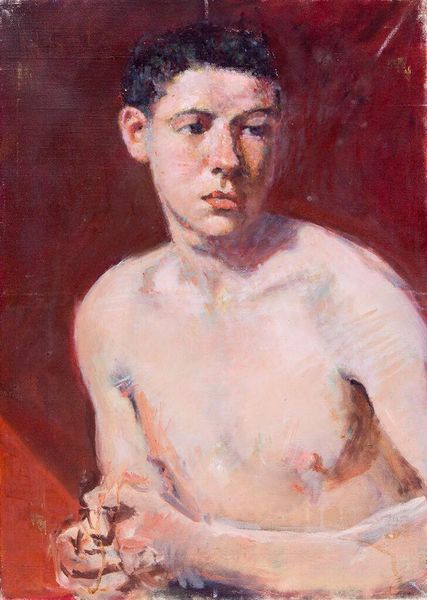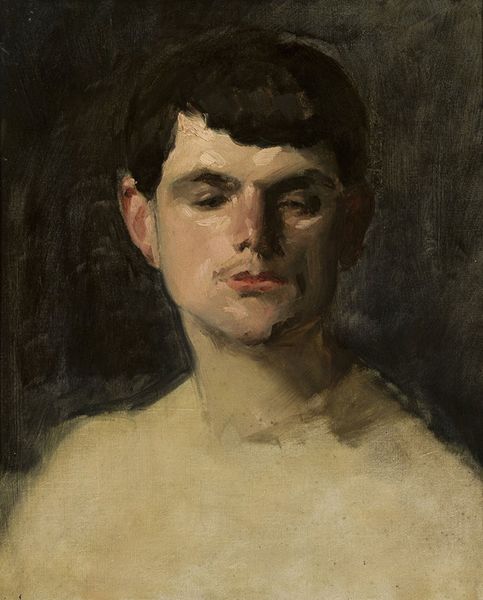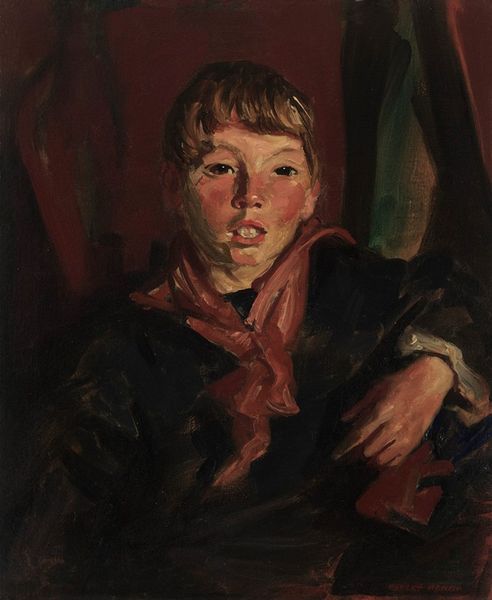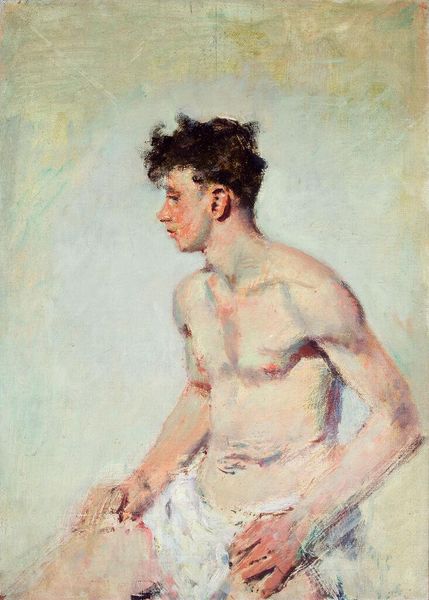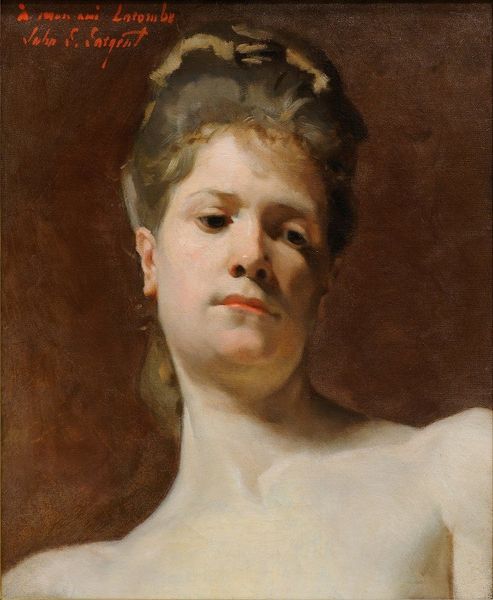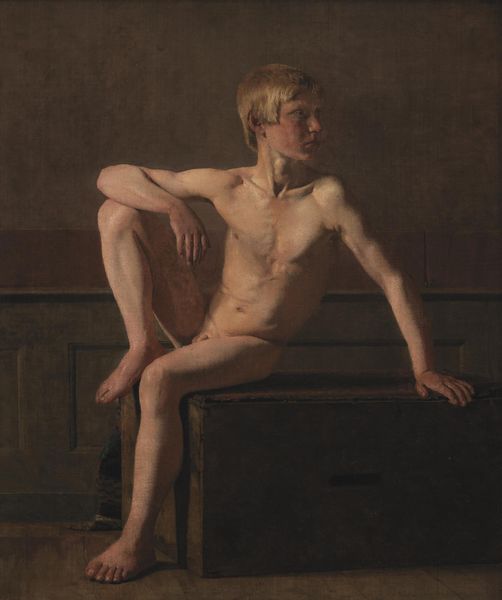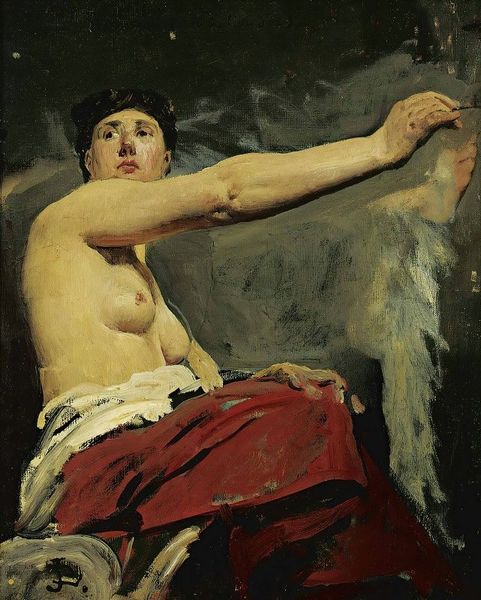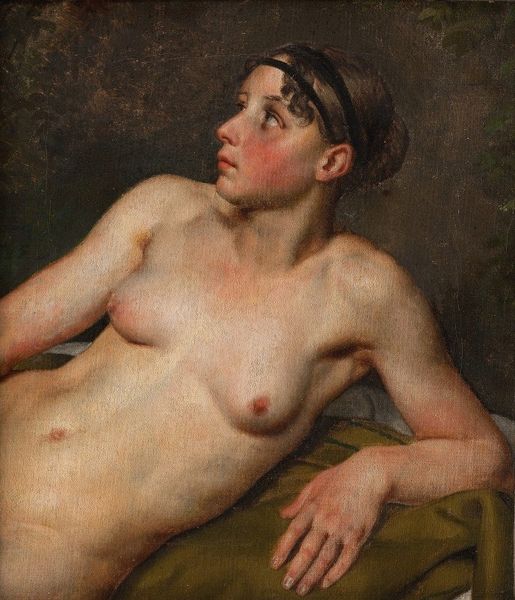
painting, oil-paint
#
portrait
#
portrait
#
painting
#
oil-paint
#
figuration
#
ashcan-school
#
realism
Copyright: Public domain
George Bellows created this painting, titled 'Paddy Flannigan', during the early 20th century. It offers insight into the social realities of urban life in America. Bellows was part of the Ashcan School, a group of artists committed to portraying everyday life, particularly that of the working class. This image of a young, partially undressed boy, challenges the prevailing conventions of portraiture, which typically depicted the wealthy. The direct gaze and somewhat defiant posture of the boy suggest an assertion of individuality, despite his apparent poverty. Bellows' work often captured the gritty realities of New York City. In this context, 'Paddy Flannigan' speaks to the social inequalities of the time, raising questions about childhood, labor, and representation. To fully appreciate this painting, one could research the social reforms of the early 20th century, photographic archives of urban life, and the critical reception of the Ashcan School. Only then can we fully understand the role of art in reflecting and shaping social consciousness.
Comments
No comments
Be the first to comment and join the conversation on the ultimate creative platform.
